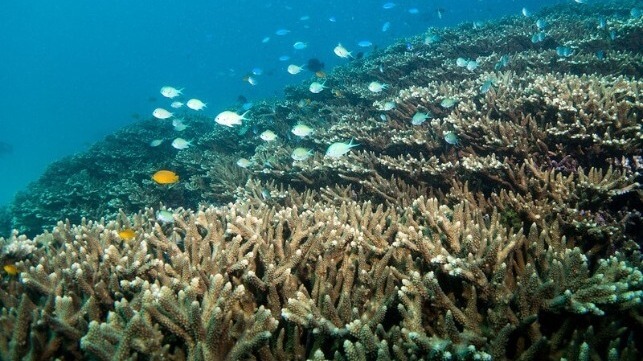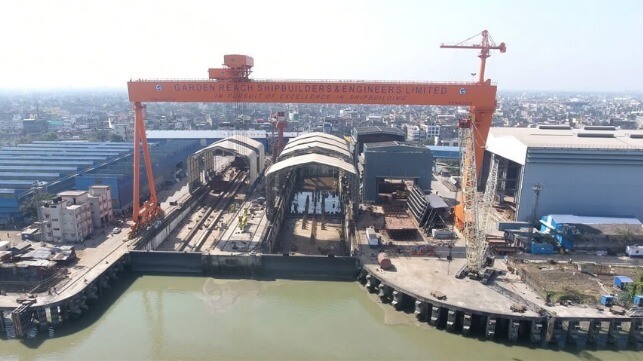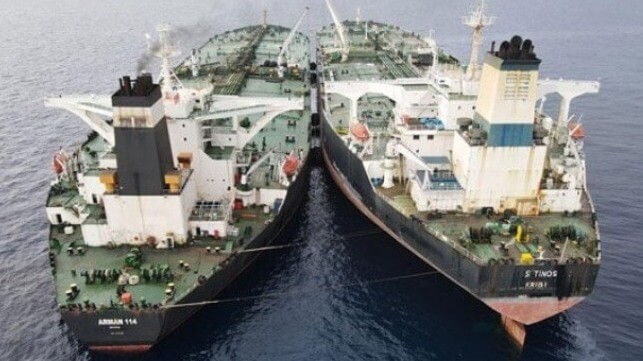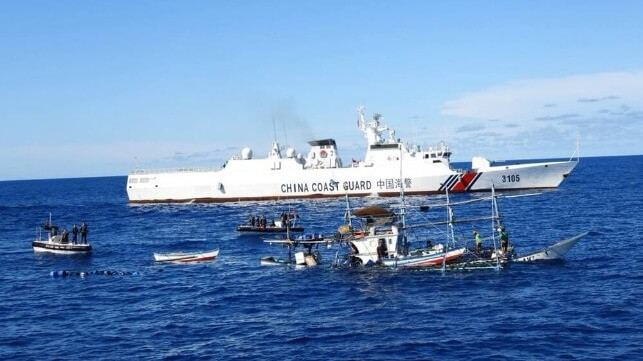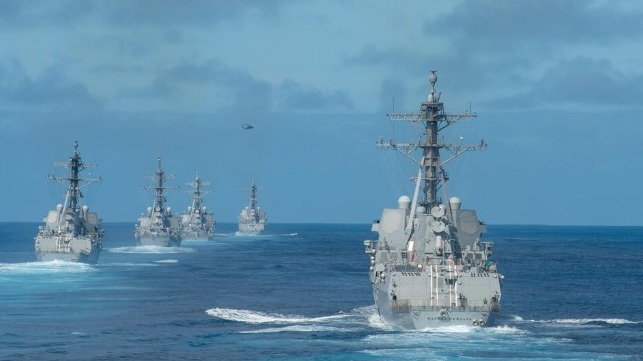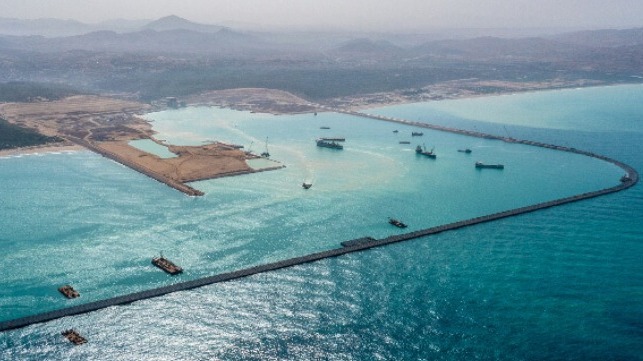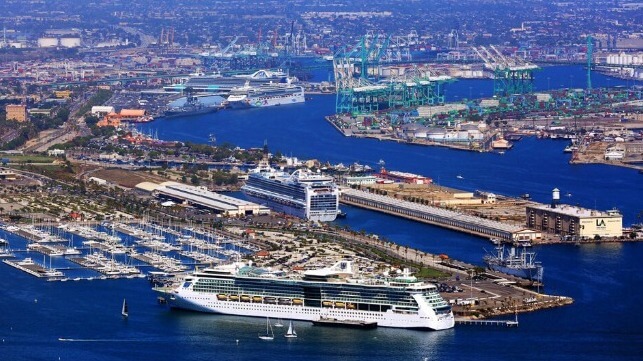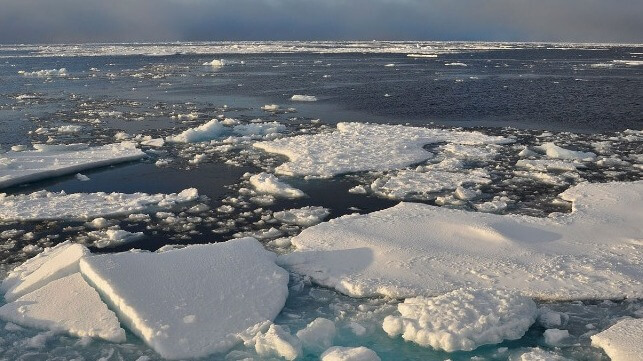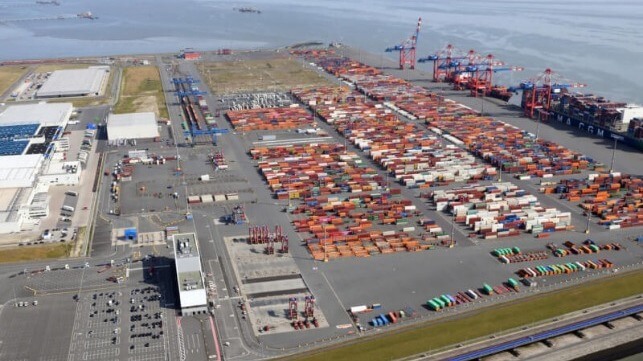The China Coast Guard actively obstructed a rescue operation to save two Philippine fishermen after their vessel suffered an engine explosion, according to Philippine Coast Guard spokesman Jay Tarriela.
The Philippine Coast Guard boat crew managed to evade the CCG patrol boats and transfer two injured fishermen on board for first aid. The two victims had second degree burns, and the BRP Sindangan got under way for Luzon - with the fishing boat in tow - to deliver them safely to higher medical care. The cutter arrived in Subic Bay in the early hours of Monday morning and transferred the two fishermen to an ambulance service.
Via state media, the China Coast Guard released its own video of the encounter and claimed that it had helped rescue the injured fishermen. The video showed China Coast Guard personnel throwing life preservers onto the stricken vessel.
The Philippine Coast Guard routinely encounters obstruction from the China Coast Guard at Scarborough Shoal and at Second Thomas Shoal, the two major flashpoints in the Spratly Islands. Several recent incidents have turned violent, and multiple Philippine servicemembers have been injured by ramming and water-cannoning. In the last run-in at Second Thomas Shoal, one Philippine soldier lost his thumb when a China Coast Guard launch rammed his boat.
[By CDR Anthony LaVopa, USN]
The United States Navy and its allies have enjoyed uncontested control of the world’s oceans for over thirty years. But the People’s Republic of China (PRC) has been ambitiously pursuing the development of its military to compete with the U.S., specifically in the maritime domain. The PRC has invested in a large Navy, a land-based mobile rocket force fielding long-range anti-ship weapons, and a modernized air force. These investments in military buildup and modernization demonstrate the PRC’s urgency to be ready for a conflict sooner rather than later. President Xi has told the People’s Liberation Army (PLA) to be ready for an invasion of Taiwan by 2027.1 However, the U.S. military, specifically the Navy, does not demonstrate that same sense of urgency. Decades spent fighting insurgents have diverted the Navy’s attention away from its original purpose – establishing and maintaining command of the seas through fleet warfare.
Since World War II, the Navy’s principal means of seizing command of the seas has been the carrier group. However, the service’s warfighting concept of Distributed Maritime Operations (DMO) is fundamentally predicated on a different set of capabilities and force packages. The Tri-Service Maritime strategy – Advantage at Sea – defines DMO as “an operations concept that leverages the principles of distribution, integration, and maneuver to mass overwhelming combat power and effects at the time and place of our choosing.”2 To effectively win a war against a peer competitor, the Navy should transition to the decentralization and distribution inherent in DMO by empowering the surface fleet to take the lead in prosecuting sea control.
The Challenge to Decentralize and Distribute
The decentralization of combat power is required to conduct effective DMO. Following the logic of the memorable Captain Wayne Hughes, DMO aims to secure the operational advantage of firing effectively first.3 It can enable a good offense and subsequently reduce the requirement for a good defense. However, generations of naval officers have matured through their careers using the carrier-centric Composite Warfare Commander (CWC) construct. This construct is inherent to using the CSG as the primary element of naval power projection, but it is in tension with the broader fleet-level principles of DMO.
Since the Gulf War, the CSG employment model has evolved into a managed defense of an aircraft carrier (High-Value Unit – HVU) to ultimately preserve the capabilities of the carrier air wing. The platforms and weapons in today’s surface fleet are those that have been optimized to support the CWC construct as part of a CSG. They are relatively short-range weapons that rely on exquisite platforms to deliver them in large quantities. Aside from the air wing, the rest of the platforms in the CSG are having their armaments, dispositions, and roles mostly driven by defensive imperatives.
Captain Bill Shafley argued that “as the DMO concept suggests, disaggregation of the CSG is driven now by lethality and survivability.”4 The essence of DMO should be to distribute and decentralize combat power based on the long-range fires capability carried by surface combatants. The vast majority of the Navy’s cruise missile firepower and vertical launch cell capacity is fielded by the surface fleet, which operates significant numbers of platforms compared to the handful of capital ships in the fleet. But the surface fleet currently lacks the long-range weapons required to mass anti-ship firepower in coordinated offensive strikes as envisioned by DMO.
The distribution of ships still assigned to a CSG is not DMO in the fullest sense, but rather just a CSG spread out over larger distances, while still using a centralized model of command and control in the form of CWC. The viability of the CSG in a high-end threat environment depends upon an initial campaign of DMO, which sets the conditions and creates a more permissive operating environment for high-value units. Forces that operate under DMO must be able to penetrate into an adversary’s weapons engagement zone and take on risks that high-value units cannot. Tethering the surface fleet to capital ship defense therefore hamstrings the broader operational potential of the fleet and diminishes the extent of physical distribution that is possible.
To realize the full potential of DMO, the Navy must pivot its focus away from platforms and focus on the underlying weapons and effects that deliver the critical enabling capabilities. As Dmitry Filipoff notes, “The ability to combine fires against warships heavily depends upon the traits of the weapons themselves. These traits offer a valuable framework for defining the aggregation potential of individual weapons and the broader force’s ability to mass fires.”5 The transition to a distributed surface force with widely-fielded anti-ship weapons could tip the operational advantage toward the U.S. Navy and set the stage for new fleet-level force packages that are less centered on capital ships the Navy can ill afford to lose.
Effective DMO Requires Long-Range Fires
The ability to deny an adversary navy the opportunity for a decisive opening salvo depends upon a fleet having a superior first strike capability. However, U.S. naval forces lack meaningful, long-range anti-ship weapons that they can employ in a distributed nature because the fleet has relied principally on the concentrated firepower of the air wing. This critical dependency on carrier aviation’s short-range anti-ship fires significantly limits the degree to which the Navy can effectively execute DMO. In his article “DMO – A Salvo Equation Analysis,” Captain Anthony Cowden (ret.) noted that:
“the single point of failure for a distributed force is the ability to coordinate a strike on another force. This coordination becomes even more complex with greater distribution of one’s force, and even more so when the enemy’s force is distributed. If the distributed force cannot coordinate their fires, they lose in every scenario.”6
This points to how the Navy must ensure it has the requisite long-range anti-ship weapons and the networks to guide them so it has a variety of resilient options for maritime strike. Without the right long-range weapons, the viability of DMO is heavily degraded because forces will struggle to effectively distribute from one another and maintain the ability to concentrate firepower. This is the situation the U.S. Navy is in today with its CSG-centric paradigm that features only a small amount of anti-ship firepower that is almost entirely concentrated in the carrier. As Filipoff notes in his article describing the current state of U.S. anti-ship firepower shortfalls and the challenges of using the air wing to sink warships, “…it would mean coming to terms with how the vast majority of the U.S. Navy’s force structure and missile arsenal is hardly able to threaten modern naval formations with anti-ship firepower.”7 This lack of weapons from a range and quantity perspective severely handicaps the proper implementation of DMO.
The Navy has made some modest strides in increasing the lethality of its surface ships, particularly with SM-6 having the capability of operating in an anti-surface mode. However, the most common variant of SM-6, with a range of about 150 miles, is still well out-sticked by the Chinese surface fleet’s YJ-18 with a range of 330 miles.8 Although newer variants of SM-6 and Tomahawk are expected to provide much longer-range anti-ship capability, it is doubtful whether ships would have the capacity to carry a meaningful amount of these weapons for these roles, since the need for heavily biasing VLS loadouts toward defense is driven by the capital ship-centric design of current U.S. naval operations and force packaging.

The PLA Navy Type-055 guided-missile destroyer Wuxi steams to a designated sea area during a maritime training exercise. (eng.chinamil.com.cn/Photo by Wang Zezhou)
The transition to surface ships loaded with long-range, offensive weapons substantially changes the overall importance of each individual combatant. No longer will surface ships simply be a defensive adjunct to the carrier and its air wing. Soon surface ships will possess the firepower to execute sea control operations, and in ways that could be more aggressive than what is prudent for capital ships. The transition to fleets centered on numerous distributed surface ships executing core offensive missions, while operating at significant distances from the nearest U.S. capital ship, is the true essence of DMO.
Conclusion
The intent of DMO should not be to render the CSG irrelevant, but rather to ensure that the CSG is not relied upon as the sole vanguard of sea control in the initial stages of a high-end conflict against a peer competitor. DMO must delay and degrade the decision-making of adversaries while denying them the opportunity to engage first. It is about establishing and maintaining temporary sea control for operational needs and sea denial all other times. The transition away from using the air wing to prosecute sea control means fully embracing the true manifestation of DMO – lethal, distributed surface ships that can combine long-range fires across broad geographic spaces.
However, given the state of weapons development and procurement, the Navy’s lack of progress in implementing the DMO concept is concerning. Against a peer competitor, the appropriate type of long-range weapons, fielded in sufficient numbers to support effective DMO, will increase the survivability of fleet and ensure its ability to maintain the initiative by firing effectively first. This transition away from the longstanding muscle memory of fighting under the CWC construct and toward a concept of using large numbers of coordinated but distributed surface units to launch fires will be essential to winning modern fleet warfare.
Commander Anthony LaVopa commanded the USS Hurricane (PC 3) and also served as a DDG-1000 requirements officer at the Office of the Chief of Naval Operations. He recently graduated with a Masters in National Security and Strategic Studies from the U.S. Naval War College as a Halsey Group Fellow and is currently the Prospective Executive Officer (PXO) of USS Bulkeley (DDG 84).
This article appears courtesy of CIMSEC and may be found in its original form here. a
References
1. https://www.defensenews.com/pentagon/2024/05/07/how-dc-became-obsessed-with-a-potential-2027-chinese-invasion-of-taiwan/#:~:text=%E2%80%9CPresident%20Xi%20has%20instructed%20the,TV%20interview%20in%20February%202023.
2. “The US Tri-Service Maritime Strategy,” Strategic Comments 27, no. 5 (2020): p. iv-vi, https://doi.org/10.1080/13567888.2021.1960095.
3. Wayne P. Hughes and Robert Girrier, Fleet Tactics and Naval Operations (Annapolis, MD: Naval Institute Press, 2018).
4. Shafley, “A NEW DESRON STAFF – BEYOND THE COMPOSITE WARFARE COMMANDER CONCEPT”
5. Dmitry Filipoff, “FIGHTING DMO, PT. 2: ANTI-SHIP FIREPOWER AND THE MAJOR LIMITS OF THE AMERICAN NAVAL ARSENAL,” Center for International Maritime Security, February 27, 2023, https://cimsec.org/fighting-dmo-pt-2-anti-ship-firepower-and-the-major-limits-of-the-american-naval-arsenal/.
6. Anthony Cowden, “DISTRIBUTED MARITIME OPERATIONS – A SALVO EQUATION ANALYSIS,” Center for International Maritime Security, March 23, 2023, https://cimsec.org/distributed-maritime-operations-a-salvo-equation-analysis/.
7. Filipoff, “FIGHTING DMO, PT. 2: ANTI-SHIP FIREPOWER AND THE MAJOR LIMITS OF THE AMERICAN NAVAL ARSENAL”
The opinions expressed herein are the author's and not necessarily those of The Maritime Executive.
